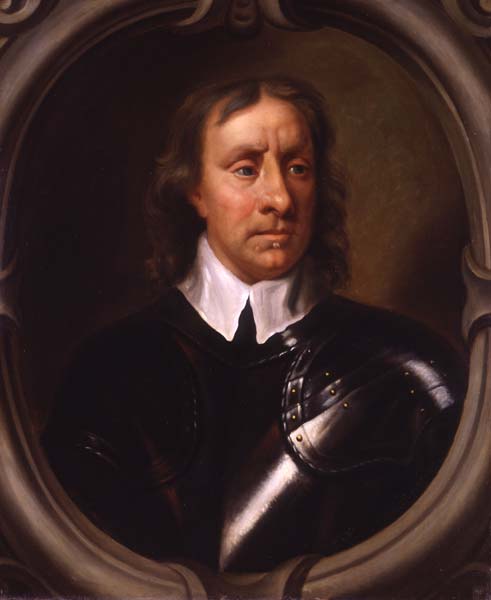One of the most significant and controversial figures in British history, Oliver Cromwell is hailed by some as a hero of liberty, but denounced by others as a dictator who massacred Catholics in Ireland and Scotland.
Born into a fairly wealthy family in Huntingdonshire, Cromwell attended Huntingdon Grammar School and briefly studied at Sidney Sussex College, Cambridge, but left without taking a degree after the death of his father. He underwent a religious conversion during the 1630s, emerging as a radical Independent Puritan with strong anti-Catholic beliefs. In 1628 he was elected to Parliament for the first time, but it was soon dissolved by King Charles I. He returned as an MP for an even briefer stint during the Short Parliament of 1640, before returning again later than year.
He joined the Parliamentary forces at the outbreak of the English Civil War in 1642 and soon rose through the ranks to become second-in-command of the New Model Army in 1645. He played an important role in securing military victories for the Parliamentarians, something that he increasingly ascribed to the will of God. In 1649 he was a signatory to Charles I’s death warrant.
During the Commonwealth he led the Parliamentary invasion of Ireland (1649) and Scotland (1650). In Ireland the public practice of Catholicism was banned, Catholic priests were killed and Catholic-owned lands were confiscated.
In 1653 he dissolved the Rump Parliament by force and established a temporary Nominated Assembly. This soon dissolved and Cromwell was sworn in as Lord Protector, de facto ruler of Britain. Although he refused to accept the crown in 1657, he was nevertheless ceremonially re-instated as Lord Protector and allowed to nominate his own successor. When he died of natural causes in 1658 his son Richard succeeded him as Lord Protector, although with little support he resigned the following year, and Charles II was invited to restore the monarchy. Cromwell’s body was exhumed from Westminster Abbey and subjected to posthumous execution and decapitation.
The Museum of London has a significant collection of ‘Cromwelliana’, much of it gathered by Sir Richard Tangye and presented to the museum by his son in 1913. In addition to Tangye’s books, pamphlets, pictures and manuscripts, the Museum holds coins and medals, and various other items associated with the life and legacy of Oliver Cromwell.








